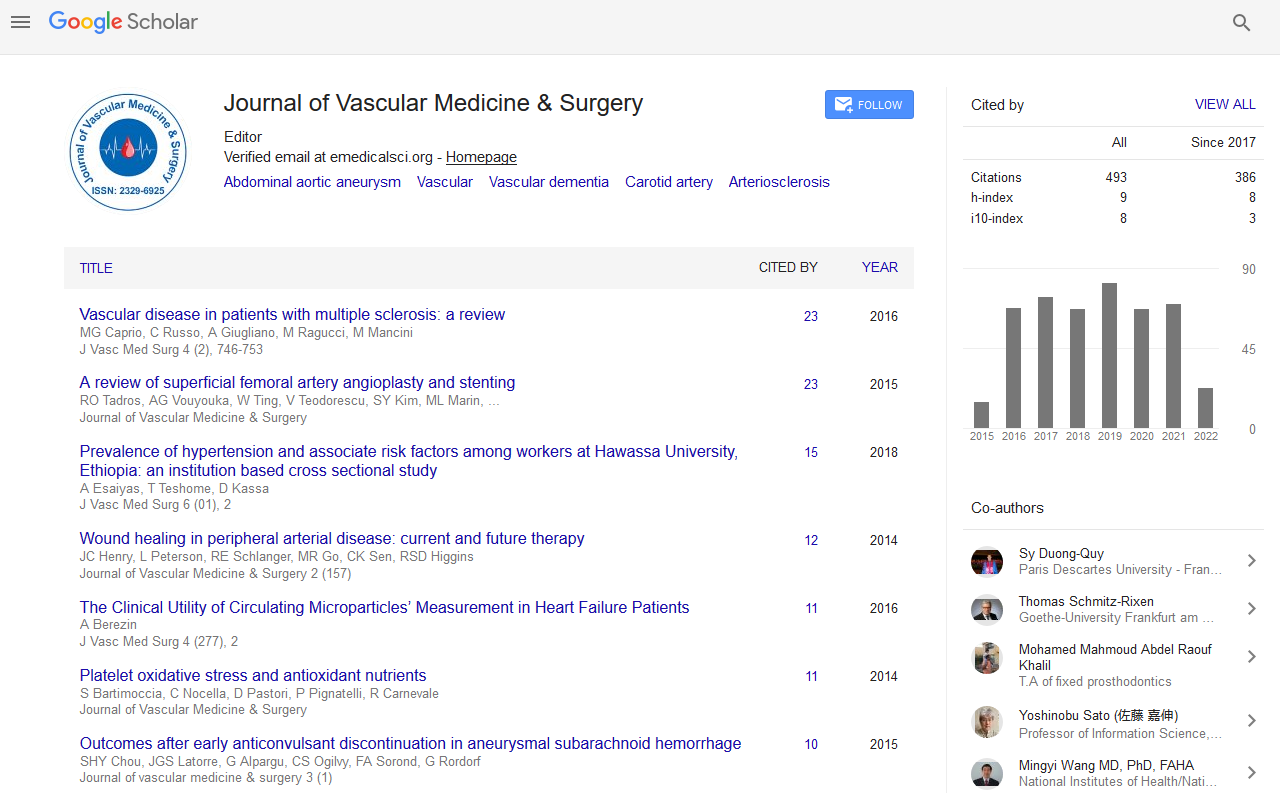Indexed In
- Open J Gate
- Academic Keys
- RefSeek
- Hamdard University
- EBSCO A-Z
- OCLC- WorldCat
- Publons
- Euro Pub
- Google Scholar
Useful Links
Share This Page
Journal Flyer

Open Access Journals
- Agri and Aquaculture
- Biochemistry
- Bioinformatics & Systems Biology
- Business & Management
- Chemistry
- Clinical Sciences
- Engineering
- Food & Nutrition
- General Science
- Genetics & Molecular Biology
- Immunology & Microbiology
- Medical Sciences
- Neuroscience & Psychology
- Nursing & Health Care
- Pharmaceutical Sciences
Abstract
Carotid Artery Diameters, Carotid Endarterectomy Techniques and Restenosis
Giovanni Bertoletti, Alessandro Varroni, Maria Misuraca, Marco Massucci, Antonio Pacelli, Marco Ciacciarelli and Luigi Iuliano
Background: Restenosis of the carotid artery is a major complication of carotid endarterectomy (CEA). The purpose of this study was to examine the role of CEA techniques on carotid dimensions variation, postoperative versus preoperative multi-segmental diameters and its impact on the development of restenosis at 12 months follow up. Methods: 175 consecutive patients eligible for carotid surgery were included in the study. 75 underwent CEA by patch reconstruction (PR), 53 by eversion (EV) and 47 by primary closure (PC). Before the procedures and at discharge, carotid diameters were measured at four reference points (common carotid, CC; carotid bulb, CB; proximal internal carotid artery, PICA; distal internal carotid artery, DICA) by ultrasonography. The rate of minor (< 50%) and major (≥ 50%) restenosis was evaluated at 12 months follow up. Results: PR produced an increase in all carotid diameters while PC and EV produced a decrease in carotid diameters, having PC affected all diameters while EV affected CB and PICA diameter. However, postoperative diameters had comparable dimension independently of the surgical technique used. The rate of overall and major restenosis did not differ significantly between the three types of surgery. Logistic regression analysis showed that female gender was associated with major restenosis (OR 6.9, 95% CI 1, 23 – 38, 49) irrespective of surgical technique. Conclusion: This study shows that carotid diameters and restenosis rate after CEA are comparable whatever is the surgical technique adopted, and that women are at high risk of major restenosis.


